I remember the first time I visited a food co-op. It was in Ann Arbor, Michigan, a wonderful, progressive town, and the co-op was incredible. From products made or grown locally in South-East Michigan (non-GMO and organic tortilla chips, fresh salsa, all kinds of fruits and vegetables, raw chocolates, kale chips, soaps, baked goods and so much more) to regionally available products (like tofu, organic candy bars, raw milk cheeses, and even miso). It was an exciting place to be. All of the food I could have wanted to buy in one place, and that food was better, healthier, and fresher. That food also paid a living wage to its creators. The prices were fair, the atmosphere pleasant, the workers in the store friendly and helpful–and most important–happy to be at work. I made it a point to get there every 6 or so weeks while I lived in Michigan so I could stock up on as much amazing, local and regional stuff as possible. The co-op was owned by the community and operated for the community. Today, I thought it would be helpful to discuss some of the underlying reasons that a community would take the long road of opening up a food co-op.
On Community Food Education & Asking the Right Questions
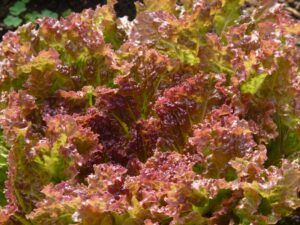
One of the issues raised at the end of the meeting was on the importance of food education in the community–if we build it, will they come? This ultimately comes down to helping the broader community understand that the issues surrounding the production and consumption of their food really matter. We’ve been led to believe that price is the only factor that matters in the purchasing of our food–but, truthfully, so much more also matters. We can look at the issue of food education through a series of questions, such as:
- Where is my food produced? (Local, regional, in the US, outside
- What regulations, if any, determine the safety of that production?
- Under which conditions is my food produced? (chemicals, pesticides, GMOs, organic practices, certified naturally grown)
- Have the producers of this food and their workers been paid a living wage? (this includes farmers and anyone who picks or processes the food)
- How far has my food traveled to arrive at my plate?
- How much waste is in the packaging?
- Have the workers who have transported, stocked, sold, or otherwise contributed to this food getting into my hands been paid a living wage?
- Is this food free of contaminants?
- Is this food healthy and nurturing for me?
- Does the money paid for this food go back into the local community?
These questions get at a series of underlying issues that, I believe, sit at the core of why communities, like my new community here in Indiana, PA, come together to take back their food. Let’s take a look at each of these underlying issues.
Transparency
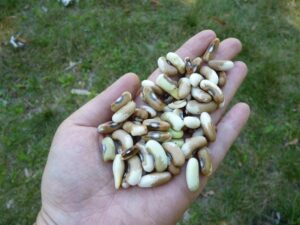
The first issue that a food-co op (and other direct sales, like farmer’s markets) solve is transparency. I believe people have a right to know exactly what is in their food, how it was grown, if there were chemical additives, what kinds of seeds it came from, and so on. Beyond being just about knowledge of what one’s putting into their bodies, we also have increasing–and severe–food allergies. People living with these allergies have to navigate an increasingly masked system where chemicals and contaminants show up all along the food chain. Even for people without allergies, the desire to know what you are eating and to eat in a chemical free, wholesome manner is critical.
Unfortunately, the US government is going in the opposite direction of food transparency, and on a national and international level, there are a lot of corporations trying to make sure we have no idea where our food is produced, the genetics of that food, and so on. Why? Because knowledge is power, and they are engaged in a slew of unethical practices (factory farming, GMO warfare, worker exploitation, etc). Just this month, the US House of Representatives, in their infinite wisdom, voted to repeal country of origin labeling on meat. I don’t know about you, but there is no way in hell I want to be eating chicken from China–now, if you buy that chicken in a conventional store–you’d just never know if the House gets its way.
Control
The second issue surrounding our food is control. I’ll give a very simple example of this: I have a friend who has some very severe food allergies, and a large grocery chain where she shops stopped carrying the only miso b that was OK for her to eat. Talking with the managers of the store did nothing to return the miso to the shelves–the decisions about what she had access to buy were controlled by “corporate” somewhere in a different state–literally hundreds of miles away. This happens all the time in big grocery chains: people who have never set foot in your town or community make all the decisions about what you have access to buy. They have access about what farms they choose to use, how they work with those farms, how they present material to consumers about the nature of those farms, and so on. Some may say “but what about the laws of supply and demand?” Sure, this works to some extent, but as my friend’s example illustrates, its rarely enough.
Access
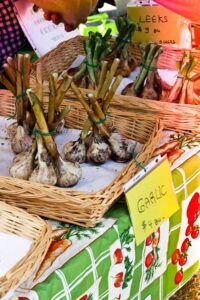
Access happens on a few levels. First, there is the physical access of the grocery store. One of the immediate issues facing our community is having a walkable, accessible grocery store that doesn’t require the use of a car. The history in Indiana, PA was that there was one in town, but it closed, and since then, our downtown hasn’t had a grocery store or really anywhere even to get foods beyond convenience foods or prepared foods. This suggests a kind of food desert, where access to healthy and fresh vegetables is largely not there (although there is bus transportation to grocery stores on the edges of town and there is a farmer’s market downtown on Saturday mornings during the warmer season). Putting a food co-op in the place where most people can easily access helps solve the issue of easy access to fresh food.
The second issue surrounding access is accessibility of good, wholesome food. Its not easy, always, for people to get food that they want to have. I end up driving all over the place to secure the basic necessities (from farmer drop-offs to the farmer’s market to bulk and health food stores). A lot of people simply won’t do that–so if we want to encourage healthier and local food choices, we need to make that food accessible. A co-op also gives us the opportunity to bring in awesome foods made regionally by other co-ops.
Food Miles & Environmental Issues
The term “localvore” has been used to describe someone dedicated to eating locally produced foods. I’ve talked about this extensively in other blog posts. One of the things a local food co-op does is allow us to reduce the amount of fossil fuels it takes us not only to get the food (going back to access) but also how far our food travels to get on our plates. It also allows us to support local, organic, and sustainable agriculture, which is generally less environmentally destructive than big agriculture (I’ll direct your attention to a recent UN report, that said the only way to solve the world’s hunger problems and address sustainability and environmental concerns was to create a network of sustainable, small farms). Its much harder for a farmer to mask poor farming practices when that farmer is only a few miles up the road–and one can see the way the farmer treats the land. Local agriculture also typically uses a lot less packaging and plastic–another source of food waste. All of these issues are wrapped up in broader environmental ones, like fossil fuel use, landfill use, and land use–and buying local can make a real difference.
Fair Trade and Fair Prices
Another benefit of a co-op is that fair trade and fair prices are emphasized for all. Local farmers are paid a
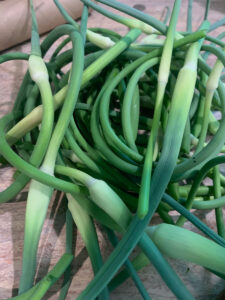
livable, reasonable wage for their food and they can grow in larger quantity knowing that they have a market. Items we can’t get locally, like chocolate or coffee, can be fair trade to ensure that all farmers and workers are paid ethically (again, when most corporations buy food, their only concern is cost, which drives farmers’ and workers’ wages down and increases poverty). At the same time, as my experience at the People’s Food Co-Op in Ann Arbor suggests, prices can be kept fair for community members, partially because the model is not for-profit, but for-community. Nobody is cutting themselves a big check out of the co-op; that money is re-invested in our farms, community, and members.
The second thing that fair trade and fair prices does, essentially, is to vote with one’s dollars. Each time you buy something, you support that practice. If we financially support organic farms, that keeps those farms going and encourages more demand. A co-op can radically increase demand for this kind of food because it makes it more accessible.
Keeping Money Local & Living Wages
Buying local means we keep money locally, into the hands of other members in our community, where it can continue to circulate and do the most good. Many big businesses involved in food have become too big and concentrate wealth in the hands of their upper managers, CEOs, and shareholders–not in the everyday workers or producers that actually grow, make, or sell the goods. By shifting money back into our local economy and into the hands of producers, we not only keep that money locally, we also develop more resiliency as a community.
There’s also an issue of workers’ pay. Most people who are working in any kind of food service industry are paid wages that likely land them on food stamps–Walmart is a prime example of this, where their workers can’t even afford to buy their cheap food because of sub-standard wages. A community co-op can ensure that workers there provide a livable wage to employees.
Resiliency
One of the big issues surrounding local food movements is resiliency. Resiliency, used in the sustainability and permaculture design movements, is basically the capacity to endure, despite various trials and setbacks. What this ultimately comes down to is that a community wants to be able to feed itself and take care of itself–because we never know if someone else will be there to do it for us. Never, at any time in human history, have so many people depended on others for basic needs of survival: food, employment, health, entertainment, and so on. I think if we can bring resiliency to our food system, we can learn how to do this is so many other ways as well–in this way, food becomes the catalyst for broader community change. Our community ceases being a market for others and instead, we start to become the producers of of our own needs. Why is this concept of resiliency important? Some of the recent natural disasters in the US are one good example–when Hurricane Sandy hit, all sorts of shipping lines were disrupted and people were largely on their own for weeks. A strong community, one that already has come together, can face these, or any other, kinds of issues.
Community Identity and Empowerment
Ultimately, what bringing a co-op to a local community means is that the residents of that community have made a commitment to the economic, health, and social well being of their community. They have decided to take the power and decisions out of the hands of corporate entities at a distance and to re-invest time, money, and energy locally where the direct effects matter. They have done so while practicing the principles of self-organization, collaboration, democracy, and compromise. This helps us build resilient, strong, and self-sustaining communities who depend on each other, who know each other, who can work together, and who grow together.
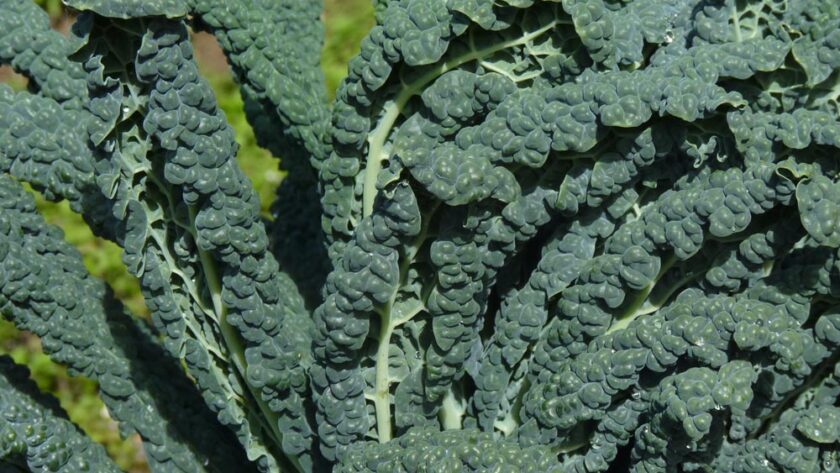



Reblogged this on Chrisy58’s Weblog.
Thanks for the reblog!
Reblogged this on Laura Bruno's Blog and commented:
Whether you hope to bring a new food co-op to your own community, or if — like many natural foods co-ops — your local co-op is currently struggling to redefine what it is, why it exists, whom it serves and how it stays in business, Willowcrow provides her usual astute analysis and exploration of the issues. Many thanks to Willowcrow for continuing a discussion that’s at the top of so many established co-ops’ radar. If you live somewhere without a food co-op, see if you can find some like minded locals at least interested in starting a bulk buying club for difficult to find organic foods. Empowerment begins with individuals addressing areas that need attention.
Yay! Thanks Laura 🙂
In Katoomba, New South Wales, Australia there is a co op that sells locally grown organic produce. Membership is open to the community for a small member fee. This entitles the member a percent off when purchasing. But if you go to work there just four hours a month you get a further percentage off your purchases. Of course anybody can shop there but only members have these entitlements. The system worked well and there was a general feeling that this shop was ours and we honoured that feeling by shopping there regularly. It had an amazing atmosphere too because people knew they were honouring the earth by carrying their own bags. And supporting local farmers. Not to mention caring for our bodies and minds with good nutritious food that wasn’t laden with pesticides.
Hi janet – thanks for sharing! The Co-Op movement seems to be a worldwide thing, at least in nations with industrialized agriculture. How fantastic! 🙂
Reblogged this on The TOSSer By Temple Of The Standing Stones.
Thank you for the reblog 🙂
You’re very welcome 🙂
We were hard pressed to find a grocery store in Costa Rica. The people worked together, having roadside local fresh food that everyone, including the traveler could enjoy. Putting it out of the hands of the large food chains and into the hands of the local people.
I’m glad your move is turning out to be a good thing – although anywhere you are, I am quite sure you would make it good. 🙂